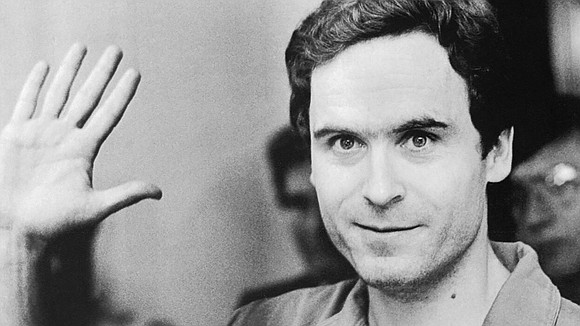'Ted Bundy Tapes,' 'Robert Durst' add to TV's 'celebrity' monsters
CNN/Stylemagazine.com Newswire | 1/22/2019, 2:45 p.m.

By Brian Lowry, CNN
(CNN) -- The appetite for true-crime programming has created a bit of a logjam, to the point where coverage of notorious murderers and serial killers is beginning to recycle. The question is whether the sheer volume of coverage risks somehow romanticizing these infamous figures.
The current week brings documentary-style projects devoted to a pair of high-profile cases: Ted Bundy -- who murdered more than 30 women in the 1970s, featured in "Conversations With a Killer: The Ted Bundy Tapes" on Netflix; and Robert Durst, the subject of HBO's "The Jinx," who will be profiled in "Robert Durst" on Investigation Discovery.
Durst's trial for one of the murders of which he is suspected, Susan Berman, was recently scheduled to begin in September, but the project -- which promises "shocking new evidence" -- goes back to his roots, including the disappearance of his wife, Kathie, in 1982.
The true-crime glut has been growing since "The Jinx" and Netflix's "Making a Murderer" premiered in 2015. That crush has become more pronounced with Oxygen rebranding itself as a dedicated crime channel in 2017 and HLN upping its quotient of true crime and mysteries -- including its own look at the Bundy case, under the "How it Really Happened" banner, in October -- along with other networks mining Investigation Discovery's "crime and justice" niche. (HLN is the sister network of CNN.)
Serial killers have long been a fixture of modern entertainment -- far beyond their actual numbers -- including fictional portrayals like "Psycho" and "The Silence of the Lambs," which drew inspiration from real-life events.
The difference now is the sheer tonnage of available content, heightening the pressure to stand out amid a crowded field.
In a piece for Psychology Today, author and criminologist Scott A. Bonn labeled figures like Bundy "celebrity monsters." Because serial killers' behavior is both rare and inexplicable, he wrote, they possess an exotic quality that taps into "a visceral appeal for the public similar to monster movies."
As a consequence, producers and networks have sought any excuse to revisit notorious names such as Bundy or Jeffrey Dahmer, whose killing spree was recently chronicled in Oxygen's "Dahmer on Dahmer: A Killer Speaks," built around a 1993 TV interview. (Oxygen also just launched "Mark of a Killer," a six-part series focusing on how some killers "obtain perverse gratification by habitually stealing mementos from murder scenes.")
"Conversations With a Killer" is predicated on more than 100 hours of audiotapes from interviews with Bundy while he was on death row, conducted by journalists Hugh Aynesworth and Stephen G. Michaud. The project is timed to the 30th anniversary of Bundy's execution in 1989.
Netflix is promoting the four-part series as providing an opportunity to "get inside the twisted mind of America's most notorious serial killer in his own words."
Still, the project gives relatively short shrift to one of the creepier aspects of Bundy's story -- namely, the spectators, many of them young women, who were drawn to the case -- a fascination, clearly, that continues. (Mark Harmon played him in the 1986 TV movie "The Deliberate Stranger.")
Michaud, one of Bundy's interviewers, describes the enduring memory of Bundy for those who dealt with him as being "like a bad cold. He just keeps coming back."
That certainly seems to be true. The only question is whether Bundy is the disease, or more likely, a symptom of a media preoccupation with monsters that, once unleashed, isn't always easy to control.
"Conversations With a Killer: The Ted Bundy Tapes" premieres Jan. 24 on Netflix.
"Robert Durst" airs Jan. 21-22 at 9 p.m. on Investigation Discovery.
"How It Really Happened with Hill Harper" will air its four-part series on Ted Bundy Jan. 26 at 8 p.m. on HLN.







